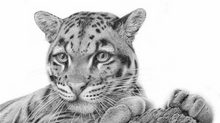A flurry of foals
- Jon Isaacs
- Aug 3, 2021
- 4 min read
Updated: Jan 13, 2023
People who visit zoos are usually keen to see the likes of the big cats, elephants, and the great apes. Considerably further down the popularity list are members of the horse, ass, and zebra or Equidae family. Perhaps it is the familiarity of horses and donkeys, which can obviously be seen regularly in our countryside and even on beaches, which leads people to head for the more exotic species. When people pass a paddock containing the equidae family, the animals may appear boring, just standing or sitting around. Yet, some of these species are amongst the most endangered creatures on the planet. They have complex herd interactions, and if viewed for longer periods than most people afford them, can exhibit fascinating behaviour. Their young are amongst the liveliest of babies and provide endless amusement and photographic opportunities for onlookers. I always find it interesting, that whereas a herd of wild horse, ass, or zebra will often get minimal response and time from the general public, if you throw in a young foal running around, everybody stops to watch the antics, the “cute” factor intervenes and smiles appear on many watching faces.

Most good zoos have their areas of expertise. For my own local zoo, Marwell in Hampshire, one of their areas of expertise is that they have become extremely good at rearing endangered members of the equidae family. Not only have they raised many young of the Przewalski wild horse, African wild ass, and all the species of zebra, but they are a leading authority on these species and keep studbooks on some of them for the European breeding programmes. Their efforts at conservation have resulted in foals being regularly bred and this has allowed me to spend countless happy hours at Marwell observing and photographing the latest additions to the various herds. This is the story of those bred in the year after the 2020 Spring lockdown.
On the 5th of August 2020, Marwell had a Somali Wild Ass birth. This species is the wild ancestor of the domestic donkey and has been registered as critically endangered since 1996. In the wild, it lives in Eritrea, Ethiopia, and Somalia where there are thought to be less than 600 in existence. It feeds on low-quality grazing like semi-arid grassland and can survive for three days without water. It is threatened by hunting for food, and competition with livestock for food and water. Fortunately, it breeds reasonably well in zoos. There are three breeding herds, including Marwells, in the U.K. and various conservation plans in its countries of origin to try and prevent it from becoming extinct. It took me several sessions, propped up against the paddock fence, waiting to get action shots, before the youngster decided to do what ass foals do best, namely hurtling around the paddock with nostrils flared, flanks heaving, and bucking furiously to delight the watching audience.
Approximately a week later, two Mountain zebra foals were born within a couple of days of each other. This zebra species is found in coastal Namibia and Southern Angola. It is classed as vulnerable, being hunted for its skin and often suffering due to lack of accessible water. It is the smallest species of zebra and is easily recognized by a square flap of skin or dewlap on its throat. In Europe, there are 110 in captivity with Marwell managing the studbook and the European Ex situ programme for the species. Both foals have turned out to be real characters, offering plenty of photo opportunities, much to the delight of visitors and probably to the despair of both mares.

Fast forward to May 2021 and the end of yet another lockdown. The news from Marwell was good. Another Mountain zebra foal was born. I had an interesting session trying to photograph it in pouring rain, with a long lens in place and a brolly, held precariously in the crook of my arm, partially protecting me and my kit from the elements. The rain was incessant and I felt really sorry for both the soaked foal and myself.
Two weeks later I was back, the weather hot and sunny. This time I hoped to photograph the eight-day-old Przewalski foal, the latest addition to the Marwell herd. This species used to be found on the Russian Steppes, Mongolia, and China. It was hunted and hybridized with domestic stock leading to ever reducing numbers. Some horses were captured for zoos where they rarely reproduced. From 1969 until 2008 they were considered extinct in the wild and at one stage were reduced to twelve breeding animals in captivity. Classified as “Critically endangered,” a small group of zoos, including Marwell, created a plan to successfully breed this species and even return them to protected areas in Mongolia and Hungary. From researching online I believe there are now over 400 in the wild and roughly 1900 in total. San Diego even cloned one called Kurt to try and increase the restricted gene pool.

I mused on these facts as I waited for the latest Przewalski foal to wake up, as he sprawled out, fast asleep in the middle of his paddock. Thanks to a demented wood pigeon that decided to literally land on top of him, the foal woke up with a start. It struggled to its feet, peered blearily at me and the wood pigeon before wobbling off after its grazing mum. As I watched it, I wondered which would be the next of the five species of equidae kept at Marwell to breed. Whichever one it is, I’m sure it will make for fascinating viewing and enjoyable photography.














































Comments